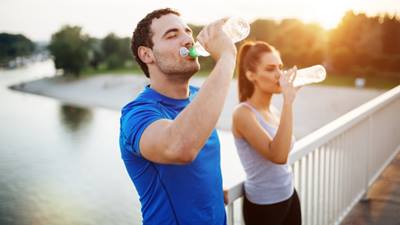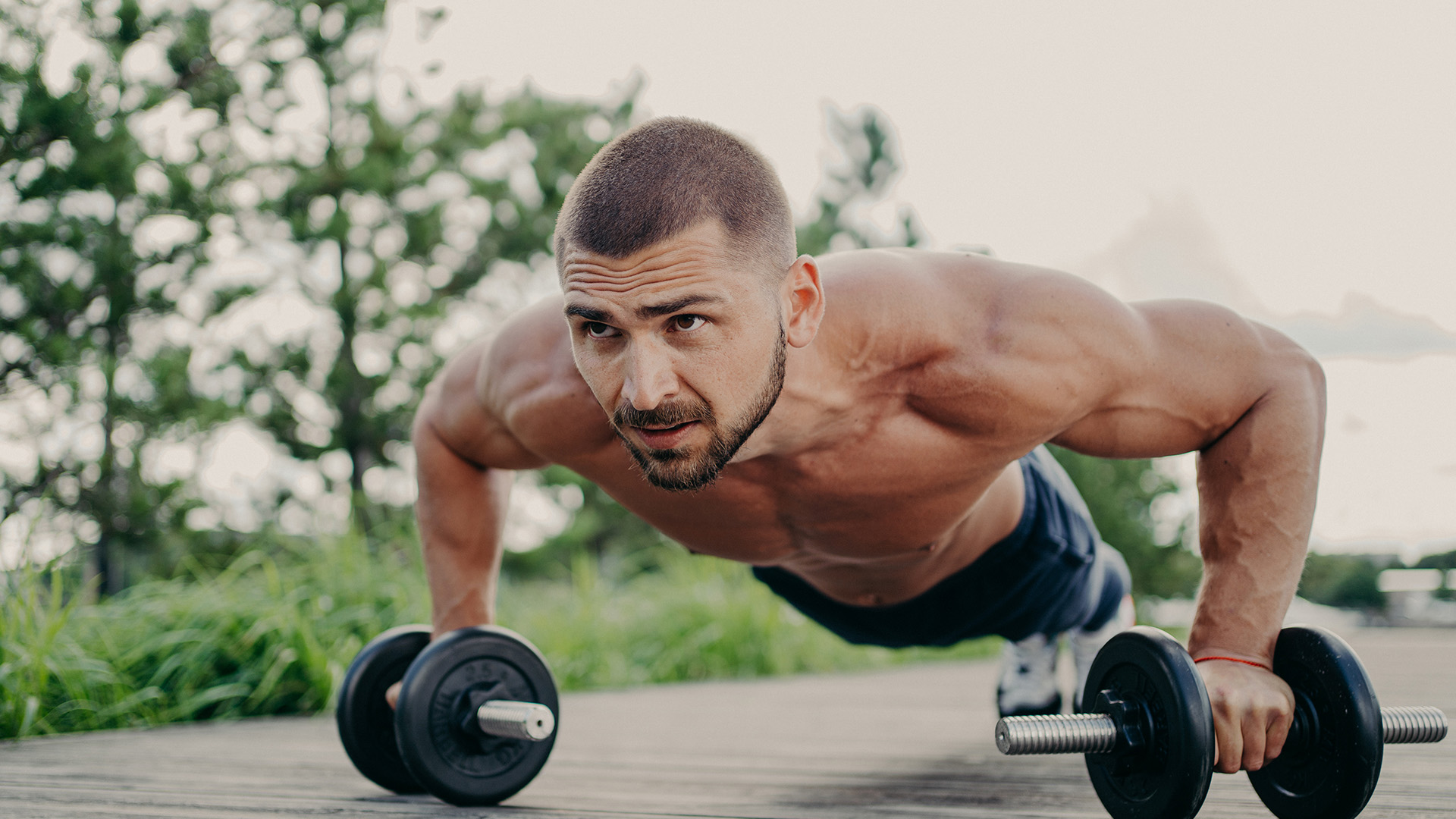Your Body—Mostly Water
Your body contains muscles, bones, blood and tissue, but most of all, it contains water. Water makes up 55 to 65 percent of adult bodies. Muscles and kidneys contain 79 percent water, and bones and the brain are close behind at 73 percent. That’s why it is essential to help the body stay hydrated so it can function at peak performance.
But we lose water all of the time through breathing, sweating and urinating. Just a 2 percent loss in body weight due to water loss leads to dehydration—a condition that can reduce strength by 2 percent, power by 3 percent and endurance in athletes by 10 percent. According to the National Academy of Sports Medicine, dehydration can affect cognition, coordination, response time, tracking, short-term memory, attention, focus and fatigue.
Even worse, severe dehydration can lead to changes in heart rate, blood pressure and body temperature. And, because your body doesn’t have the water to cool itself off by sweating, dehydration can contribute to a dangerously high body temperature, resulting in hyperthermia or heatstroke.
Enough Water, but Not Too Much
You don’t want to chug gallons of water before a practice either. Not only would that be uncomfortable and result in multiple restroom breaks, but it also can be bad for your health. Too much water can result in a condition called hyponatremia, or water intoxication.
This occurs when the amount of water you drink dilutes the sodium that is naturally found in the blood. Sodium is an electrolyte, or mineral, that helps maintain blood pressure and helps nerves, muscles and body tissues to work correctly. When there isn’t enough sodium in the fluids outside cells, water moves into the cells to balance the level, but that causes the cells to swell—this is particularly dangerous when the brain cells swell.
Getting the Right Balance of Hydration
Don’t drink too much water, but don’t drink too little. How can athletes know what is the safe amount? The American College of Sports Medicine (ACSM) makes the following recommendations:
Before exercise:
- Drink beverages with meals to enhance fluid replacement.

- Avoid caffeinated beverages, such as coffee, tea or soft drinks.
- Recover 8 to 12 hours after last exercise session to give your body time to replace fluids.
- Track your weight daily, comparing your weight right before exercising to right after so you know how much fluid has been lost.
- Consider drinking 16 to 20 ounces four hours before exercise and again one hour before exercise.
During exercise:
- Drink when you feel thirsty, but don’t force yourself; trust your thirst.
- Don’t drink more than 800 mL per hour.
- In very hot weather, you may need to increase your fluid intake and pace.
- If you’re involved in prolonged exercise, you may want to drink a beverage that also contains 6 to 8 percent carbohydrates.
After exercise:
- Drink 16 to 24 ounces of fluid for every pound lost.
- Include drinks in post exercise meals.
Know the Signs of Dehydration
When you’re in the middle of practice or caught up in a workout, dehydration can sneak up on you. Know the signs, which include feeling thirsty, dark yellow urine, headache, nausea, faintness and vomiting. If you have extreme signs of dehydration, such as faintness, vomiting, rapid heartbeat, fever or unconsciousness, contact 911 immediately.
Keep your body healthy and hydrated by listening to it and drinking before, during and after you exercise.
Are You Interested in Learning More About our Sports Medicine Specialties?
Our sports medicine and orthopedic physicians, surgeons, physical therapists, physiotherapists, pain management specialists and other clinicians approach you as an individual with unique circumstances and needs. We use the most up-to-date diagnostic tools to evaluate your condition and minimize your pain and recovery time.
Learn More










